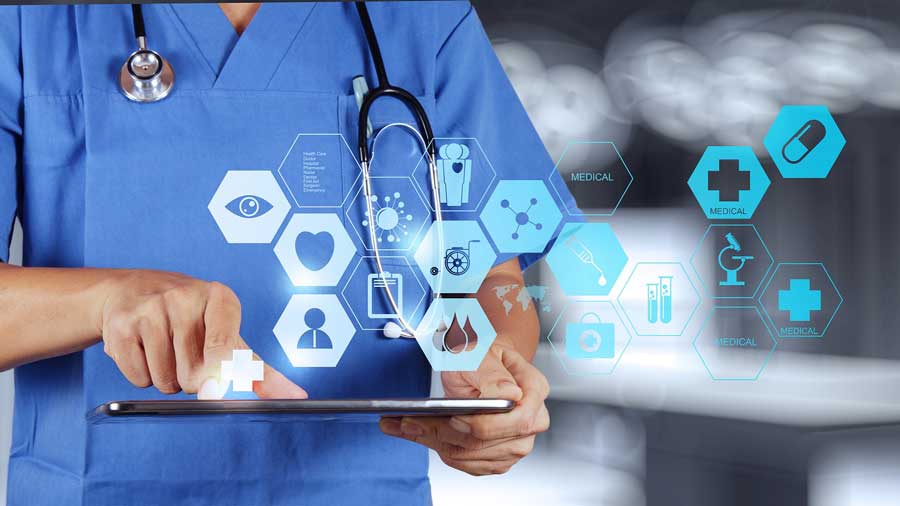In response to worldwide health and fitness trends, the adoption of biometric devices, or Internet of Medical Things (IoMT) within healthcare and other demanding professions is growing fast. What is the actual growth rate of these IoT-based biometric devices? How can they be used? And what opportunities do they offer for your company?
The use of medical biometric wearables is spreading rapidly. Business Insider Intelligence estimated that 73 million IoT devices were installed in the healthcare sector in 2016 and forecasts an increase to 161 million by 2020. Biometric devices can monitor physical characteristics, such as blood pressure, heart rate and temperature. Within healthcare, these devices can make a huge difference and improve efficiency due to constant tracking and recording of accurate data. IoMT offers multiple opportunities. In an article about the future of home healthcare, Nick Ismail, editor for InformationAge, says ‘this connected health ecosystem of IoMT devices, when paired with the seamless integration of supporting online tools, is ushering in a new era of smarter patient care’.
Biometric wearables within healthcare
Biometric sensors convert physical phenomena into electrical signals which can be processed or transmitted and received wirelessly. Organizations can create new healthcare and safety systems by developing and using these devices. One of these devices is vMetrics, developed by NASA. The device offers health professionals the ability to remotely monitor a patients vital signs in real time. Besides measuring physical characteristics, the patients are also able to communicate with their healthcare providers. vMetrics offers a lot of benefits for both the healthcare providers and patients, such as reduced duration of hospital stays, reduced strain on healthcare providers and patients greater control over their health. The IoMT device provides opportunities to optimize and personalize healthcare.
Increasing the safety of firefighters
IoT and biometrics also improve safety systems. The National Fallen Firefighters Foundation (NFFF) hosted the Firefighter Psychological Monitoring Technology Summit to discuss how IoT and biometrics can reduce line-of-duty deaths. The use of wearable electrocardiogram devices to detect early signs of cardiac events after firefighting or training exercises and the use of algorithms to estimate core temperature with the goal of reducing the risk of heat-related injuries and fatalities, were some of the points discussed. The goal is to transmit the data real time to the incident commander who can make critical decisions about the safety of the team. This results in increasing the safety of firefighters, and consequently, saves their lives.
The need for input from medical workers
The uptake of biometric wearables can result in a lot of possibilities, such as improving patient care, more efficiency and lower costs. It is important to implement these devices to be able to offer better care as a medical worker and receive better care as a patient. To realize this, it is necessary that medical workers interfere and share their knowledge. Only then it will be possible to develop and implement the right digital devices. Innovative companies have recently been developing a lot of IoT devices and these do not end up on their feet as long as there is no input from the healthcare sector. The collaboration between the medical organizations and innovative companies is an important part of the adoption of biometric wearables. This is highlighted by Machteld Hiemstra in an article on Emerce: “Technology companies want to develop quickly, medical authorities are more cautious. Be aware of this and manage mutual expectations from the start.”

